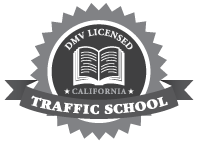
 (877) 245-6972
(877) 245-6972
(877) 245-6972
(877) 245-6972

 (877) 245-6972
(877) 245-6972
(877) 245-6972
(877) 245-6972
When it comes to children passengers and safety, the child seat should be top on your list of concerns. This article covers the aspects of the law and child safety seats.
Child safety seat requirements depend on a childs age as well as weight and height. However, not all types of safety devices follow only the age guide. Different seats have different age and weight requirements. Make sure to follow these for your childs greatest safety. These guidelines can be found with the guide that accompanied the seat when purchasing or often there is a tag or sticker on the seat defining the safety requirements such as weight, height and age.
Below we have outlined some general guidelines, but remember it is always recommended to check the specfications on the manufactures recommendations for each child car seat and type.
With infants (typically birth to 3 years), use rear-facing infant seats. The rear-facing seat installed in the back seat protects your child’s head, neck and spine in a potential crash, and reduces the risk of death in infants younger than 1 year by 71%. These are safest for your infant and you should keep the child rear facing for as long as their age and growth allow this.
There are convertible seats, which can be used both as rear- and as front-facing, adapting as your child grows, and 3-in-1 seats (or all-in-one seats), which can be used in these two ways described and also as booster seats.
With toddlers (in the 1- to 7-year range), forward-facing child safety seats may be used. Remember that your child is safest in the rear-facing position, so do not rush the transition as long as their height and weight allow this. Forward-facing seats use a harness and a top tether to limit the child’s movement in case of a crash, and to protect their head, neck and upper torso. These can be the convertibles and 3-in-1s mentioned above, and combination seats, converting from a forward-facing seat to a booster.
With older children (4 to 12 years of age), booster seats may be used. These lift the child so the seat belt fits and ensures the child’s safety rather than posing an added risk, which is the case when the belt doesn’t fit properly.
All states require infant and toddler seats, and all states except Florida and South Dakota currently have laws regulating the use of booster seats as well. Child restraint in one of the above forms is required by law in California for children under 8 years of age. The first offense is punishable by $100 in California, and the fine can be as high as $500 in different states.
Where this is available and practicable, all children are normally required to ride in the back seat and should be done for your childrens saftey.

"excellent course..."
Joseph W. - Sacramento, California
"It was easy to follow."
Brenda L. - Los Angeles, California
"I l"
Reva K. - San Diego, California
"I accidently entered the wrong county - Kern and it should have been Kings County - I don't find a way to change to the correct county - there should be a way to do that."
Daniel V. - Kern, California
"Well done. Thank you!"
Phyllis B. - Sacramento, California
"good traffic school."
Tim E. - Sacramento, California
"Perfect test"
Ramez K. - Los Angeles, California
"Flexible access to lean for busy people. "
Susan M. - Kern, California
"A very good and simple course. There are many grammatical errors in the written text."
Barbara G. - Los Angeles, California
"I learned anew new things and appreciate the simplicity with which the material was presented. It was user-friend
Y
Ly for this octogenarian.…)"
Lynn R. - Mono, California